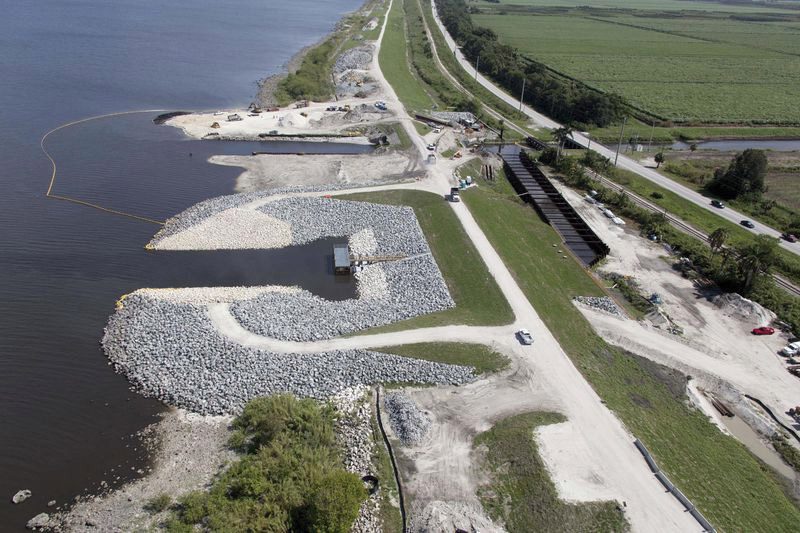Indian RiverKeeper: April 2022 Update
We are happy to report that House Bill 349, a seagrass mitigation bill filed by Rep. Toby Overdorf, with a Senate companion (SB 198) sponsored by Senator Ana Maria Rodriguez, has died in session.

As we reported in our March CAM column, it allowed developers to pitch some money into a mitigation bank to make up for any and all destruction of Indian River Lagoon seagrass they might cause in shoreline or below waterline projects. The Lagoon has lost in the neighborhood of 60 to 90 percent of native grasses due to poor water quality primarily. The maddening part of these dead bills is that mitigation bank monies could be used for seagrass restoration anywhere in the state, not necessarily where the initial damage happens. Secondly, seagrass restoration is in its relative infancy, and success rates are low, and real success on a large scale will depend on substantial water quality improvements, which was not addressed in the bills.
Interestingly, the sponsors of the bills are now advocating for changing Florida’s seagrass restoration permitting process, one that takes nearly a year by the Florida Department of Environmental Protection (DEP). According to a video email released in early March by Rep. Toby Overdorf, the hope is to expedite the process to allow seagrass growers to plant in specified locations in more timely manner, as soon as grasses are available.
“Through administrative process rather than a bill, it appears we can get DEP to issue permits quickly, when growers have the materials (such as the woven grass mats that Florida Oceanographic makes) and ideally, in the prime growth months from April through September,” said Florida Oceanographic (FOS) Executive Director Mark Perry.
Perry stresses the need for the right site, the right time of year, and ultimately, the best water quality possible to allow mostly manatee grass and shoal grass to get a foothold and survive.
FOS still monitors a successful planting site, just north of the Jensen Causeway on the west shore of the Indian River Lagoon. Woven manatee grass mats with a mix of shoal grass still exists there. FOS is conducting regular volunteer grass-matting sessions, so interested individuals should visit the Florida Oceanographic Coastal Center at www.floridaocean.org.
Lake O Watch
After a drier-than-normal dry season, Treasure Coast anglers on the southern Indian River Lagoon have enjoyed fairly good water clarity. However, this clarity makes plain just how much seagrass we have lost, as well as the forage species such as pin fish, and gamefish, such as spotted seatrout, that depend on grassy habitat. Much of the sand flats inside the St. Lucie Inlet look like the Bahama Bank, and macroalgaes, Caulerpa algae and Lyngbya, a cyanobacteria, are predominant.

And now, the wet season lies just ahead, with June 1 the official start. It is with trepidation that we watch Lake Okeechobee’s elevation (water height above sea level) to predict if and when the Army Corps decides to start Lake discharges to the coastal estuaries. Keep in mind that the Lake Okeechobee Systems Operating Manual (LOSOM) that promises a 37 percent reduction in Lake water to the estuaries does not kick in until 2023. The Herbert Hoover Dike strengthening project will be completed by late 2023.
But this year, we are at the mercy of Mother Nature. At this writing (March 8) the Lake stood at 14.32 elevation, around 3/4 of a foot lower than this date in 2021. It’s an improvement, but Treasure Coast residents would like to see the Lake down to 12.50 for “breathing room” especially in light of the prediction by forecasters that the Florida peninsula will see more hurricane strikes than in 2021, when Louisiana took the brunt. Since November 2021, the St. Lucie River and lower Indian River Lagoon has enjoyed normal salinity readings, in the 25 to 33parts per thousand. It allowed oysters to flourish, but the reports of native seagrass sightings have been few, and our own observations that much of the coverage is Caulerpa algae and macroalgae of various kinds.
Business Partners Back on Board
We would like to recognize our dedicated Supporting Business Partners who have decided to renew their membership/donations to Indian Riverkeeper in 2022. They are White’s Tackle, D.O.A. Lures, River Palms Cottages and Fishcamp, Lindsay Marine, Blue Current Media, Snook Nook, Renzetti, William E. Lippisch Oral Surgery, Engel Coolers and Hardy Flyfishing.
If you are a business owner and would like to learn more about the benefits of supporting Indian Riverkeeper, email Executive Director Mike Conner at keeper@theindianriverkeeper.com or call (772) 521-1882. Contact us if you are interested in volunteering at future events, which we will announce on our Facebook page, “Indian Riverkeeper.”




